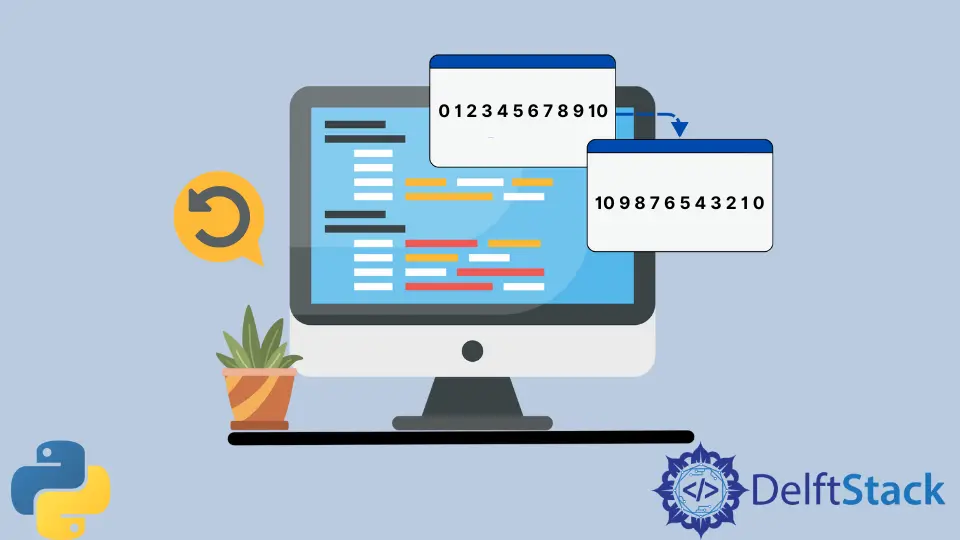How to Loop Backward Iteration in Python

Looping is a fundamental concept in programming that allows you to iterate over a sequence of numbers, lists, or other collections.
In this article, we will focus on backward iteration in Python, which is a useful technique when you need to traverse a sequence in reverse order. Whether you’re dealing with lists, strings, or other iterable objects, Python provides several methods to achieve backward looping. We’ll explore these methods, complete with code examples and explanations, to help you understand how to implement backward iteration effectively.
Using the range() Function
One of the simplest ways to loop backward in Python is by using the range() function. This built-in function allows you to generate a sequence of numbers, and by specifying the start, stop, and step parameters, you can easily create a backward loop.
Here’s how you can use the range() function for backward iteration:
for i in range(10, 0, -1):
print(i)
Output:
10
9
8
7
6
5
4
3
2
1
In this example, the range(10, 0, -1) function generates numbers starting from 10 down to 1. The first parameter specifies the starting point, the second parameter indicates the stopping point (not inclusive), and the third parameter defines the step, which is negative in this case. As a result, the loop iterates backward, printing each number in descending order. This method is efficient and easy to implement, making it a popular choice for backward iteration in Python.
Using List Slicing
Another effective way to loop backward in Python is through list slicing. This technique allows you to create a reversed copy of a list or any other sequence type. By using the slicing syntax, you can easily iterate over the elements in reverse order.
Here’s an example of how to use list slicing for backward iteration:
my_list = [1, 2, 3, 4, 5]
for item in my_list[::-1]:
print(item)
Output:
5
4
3
2
1
In this code snippet, my_list[::-1] creates a new list that is a reversed version of my_list. The slicing syntax [::-1] means to take the entire list but step backwards by one. This allows us to loop through the reversed list seamlessly. This method is particularly useful when you want to maintain the original order of the list while also needing to access its elements in reverse. It’s concise and leverages Python’s powerful slicing capabilities.
Using the reversed() Function
Python also provides a built-in function called reversed(), which returns an iterator that accesses the given sequence in the reverse order. This method is particularly useful when you want to avoid creating a new list and simply want to iterate over the elements in reverse.
Here’s how you can use the reversed() function:
my_string = "Hello, World!"
for char in reversed(my_string):
print(char)
Output:
!
d
l
r
o
W
,
o
l
l
e
H
In this example, the reversed(my_string) function call creates an iterator that starts from the last character of the string and moves to the first. This method is efficient because it does not create a new list; instead, it generates the elements on-the-fly. This approach is particularly beneficial when working with large sequences, as it saves memory. The reversed() function can be used with any iterable, including lists, tuples, and strings, making it a versatile option for backward iteration in Python.
Conclusion
Backward iteration is a valuable technique in Python that can simplify your code and enhance its efficiency. Whether you choose to use the range() function, list slicing, or the reversed() function, each method has its benefits and can be applied in different scenarios. Understanding these techniques will not only improve your coding skills but also allow you to tackle various programming challenges with ease. So, the next time you need to loop backward, you’ll have the right tools at your disposal.
FAQ
-
What is backward iteration in Python?
Backward iteration in Python refers to the process of traversing a sequence from the last element to the first. -
Can I use backward iteration with strings in Python?
Yes, you can use backward iteration with strings using methods like list slicing or the reversed() function. -
Is using range() for backward iteration memory efficient?
Yes, using the range() function is memory efficient as it generates numbers on-the-fly without creating a new list. -
What is the difference between reversed() and slicing?
The reversed() function returns an iterator, while slicing creates a new reversed list. The former is more memory efficient. -
Can I use backward iteration with custom objects?
Yes, as long as your custom object implements the iter() and next() methods, you can use backward iteration.